A road trip from Alice Springs to Uluru is not just a journey across the red heart of Australia but a plunge into an ancient landscape that has stories as old as time. This epic itinerary is not only about distances on the map; it’s about experiencing the deep cultural meaning and magnificent natural beauty of Central Australia. Between the rugged escarpments of the West MacDonnell Ranges and an enigmatic Uluru itself, each mile covered is a step back into the country’s earliest past and a closer look at its vigorous indigenous culture.
Planning Your Road Trip
Best Time of the Year to Visit
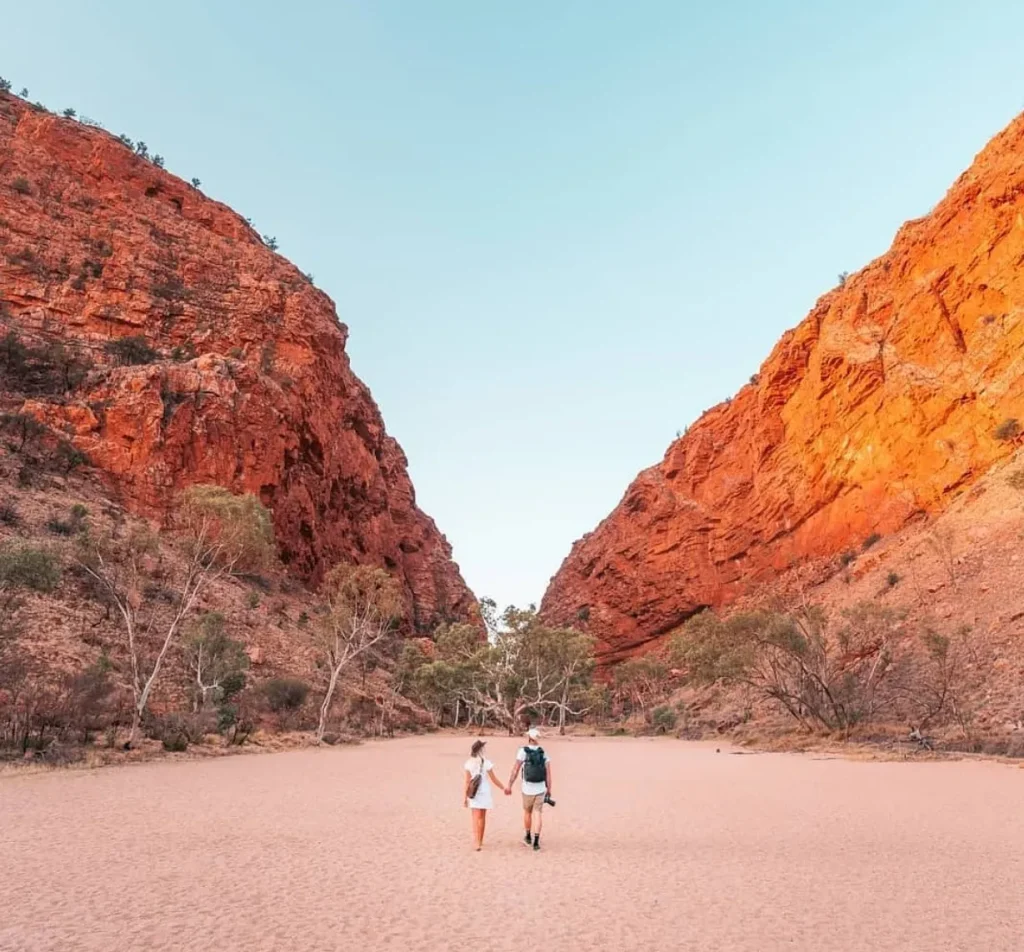
When trekking through the Australian outback, timing can be everything. It is best to travel between Alice Springs and Uluru in springtime, which runs from September through to November. The weather in these months doesn’t get extremely hot, so life for all creatures in deserts comes alive. Visitors will enjoy sunny, clear days with cool nights for camping under the outback’s starry sky.
What to Pack
When planning your packing list for an adventure in the Outback, think ahead. Bring plenty of water – aim at two litres per person per day since you get dehydrated quicker than you may think due to dry desert air. Comfortable, breathable clothing is required during the daytime, while warm layers will protect you from cold evenings. Don’t forget sun protection, good walking shoes and all camping equipment if you plan to stay at bush camps or caravan parks along this route.
The Ultimate Route
Before setting off, it’s important to know what your route entails. The Stuart and Lasseter Highways form most part of the trip from Alice Springs to Uluru, which are well travelled routes with most sections being sealed making them suitable for vehicles of any type. However, detours such as Mereenie Loop Road will require a 4WD and permit to drive on Aboriginal land. These roads provide more secluded attractions but be ready for dirt track.
Full Driving Itinerary
A detailed day-by-day itinerary is useful to make the most of your trip. After starting off at Alice Springs, spend a whole day exploring local treasures like Alice Springs Desert Park and Anzac Hill before heading westward to Uluru. Here’s what it would look like:
- Day 1: Alice Springs – Kings Canyon – Rise early in order to visit Standley Chasm and Ellery Creek Big Hole in the West MacDonnell Ranges area. Stay overnight at one of Kings Canyon Resort’s accommodations.
- Day 2: Kings Canyon – Uluru – Start with a rim walk around Kings Canyon before driving to Ayers Rock. Check into Ayers Rock Resort or camp at one of those campsites allocated for that purpose.
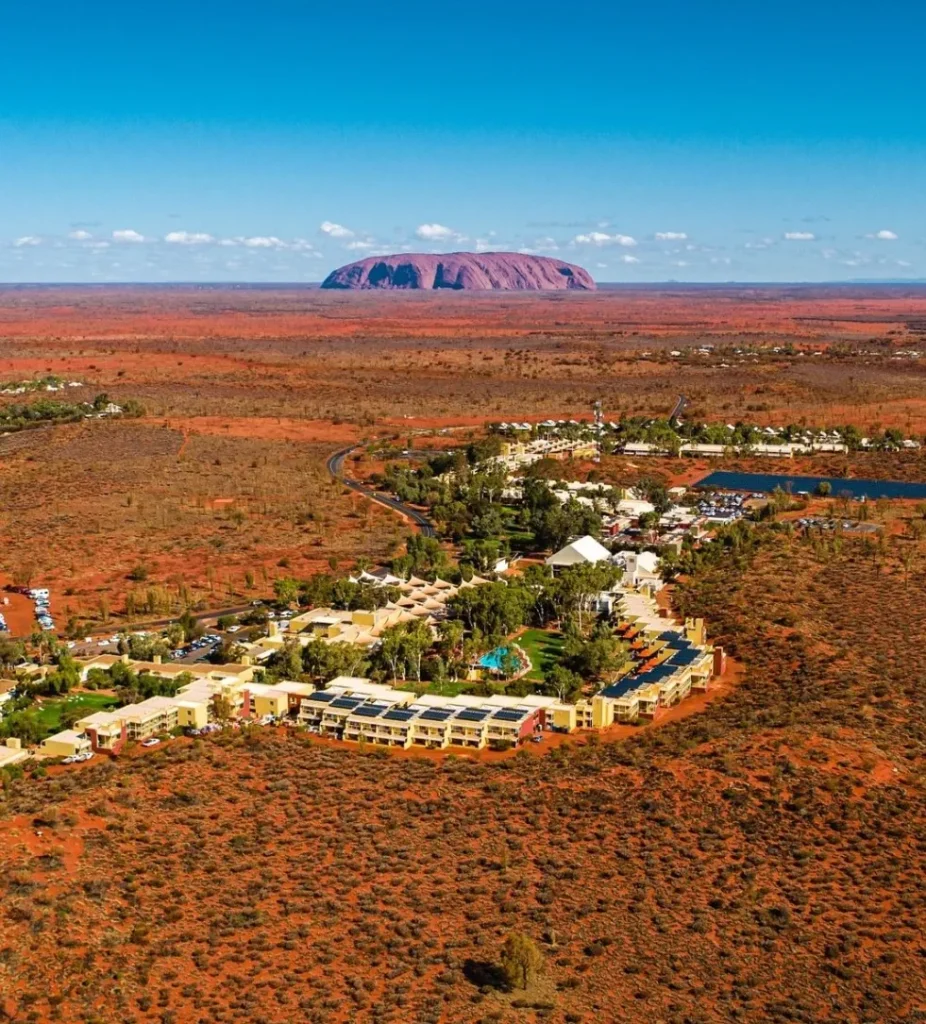
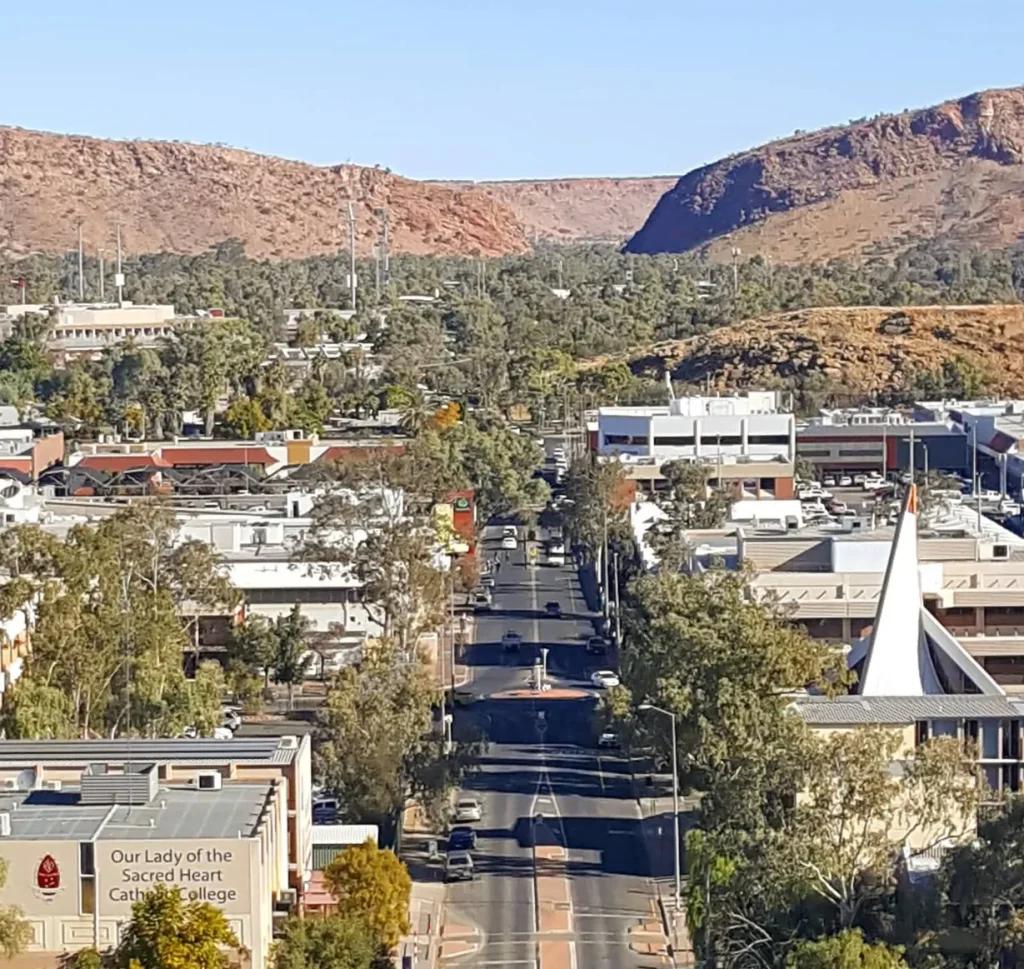
Remember while on these travels, petrol stations can become quite scarce so make sure you stock upon each stop. Each place has its own beauty, from the steep gorges of Western Macs to the silhouette of Uluru against the sunset sky.
Starting Your Journey
Outback life is represented through numerous experiences available in Alice Springs. Get to know the local flora and fauna by visiting the Alice Spring Desert Park or take a historic walk towards the Aboriginal arts centre in town. The Royal Flying Doctors Service base is also worth seeing for those interested in Outback medical history.
Where to Stay
From luxurious hotels to budget backpacker hostels and caravan parks, there are various accommodation options for every pocket in Alice Springs. Before and after long drives through the Northern Territory’s remote parts, staying in a local lodge for a night or two could be ideal to ensure some comforts are added.
Safety Tips
Travelling out back is an adventure which necessitates being prepared. Carry a detailed map all times and if possible a GPS especially when driving on unsealed roads since you can lose mobile signals along the way. Ensure you inform somebody about your trip plan including expected return hence they will help notify authorities just in case something goes wrong as always happens while deviating from major routes.
Need to Know Before You Go
Respecting environmental concerns and the cultural sites of Indigenous people are crucial things to note before going on this journey. Many places, such as those around Uluru, are of deep significance spiritually among Aboriginal communities. When it comes to taking pictures or accessing sacred areas, one should always consider guidelines given by respective signs because some places might be more sensitive than others; keep away at all costs! Do not forget that some lands belong to certain tribes, so visitors must have permits; otherwise, they may not enter such regions freely.
Each stop along your road trip from Alice Springs to Uluru should offer you more than a chance to stretch your legs. These are places of learning and amazement ranging from the cold waters of Ellery Creek Gorge up to ancient rock art at Uluru Kata Tjuta National Park. Take out your camera and let your spirit be ready for a journey that is as enlightening as it is exciting! This road trip will certainly live in the memories of everybody who does it, whether you are watching Uluru change its shades at dusk or listening to the Anangu’s Creation Stories.
What To Do And See
Iconic Sights and Experiences at Uluru
The first thing on many people’s lists, once they reach Uluru, is doing the Base Walk around the Rock. It gives you a chance to feel the grandeur of this colossal monolith up close from different angles and see several spots deeply significant culturally along the way. Depending on how interested one is in interpretive signs and indigenous art sites, this walk may take approximately 3-5 hours, considering your pace.
Then we have Field of Lights by Bruce Munro, which gives an awe-inspiring experience when darkness sets in over the desert and thousands of light spindles start pulsating. Covering an area equivalent to seven football fields, this installation uses over 50,000 fibre optic lights in a stunning display that lights up the landscape and accentuates its natural silhouette against that of Uluru.
Things to Do
Besides exploring Uluru itself, there are other important natural wonders in this vicinity:
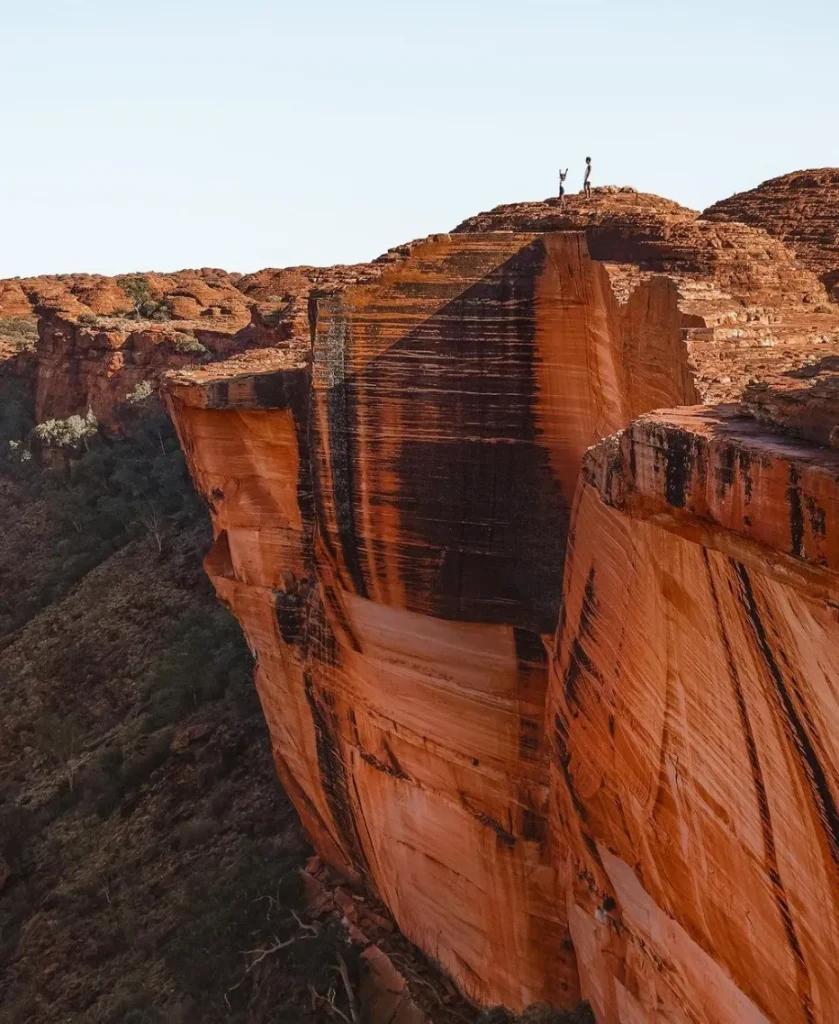
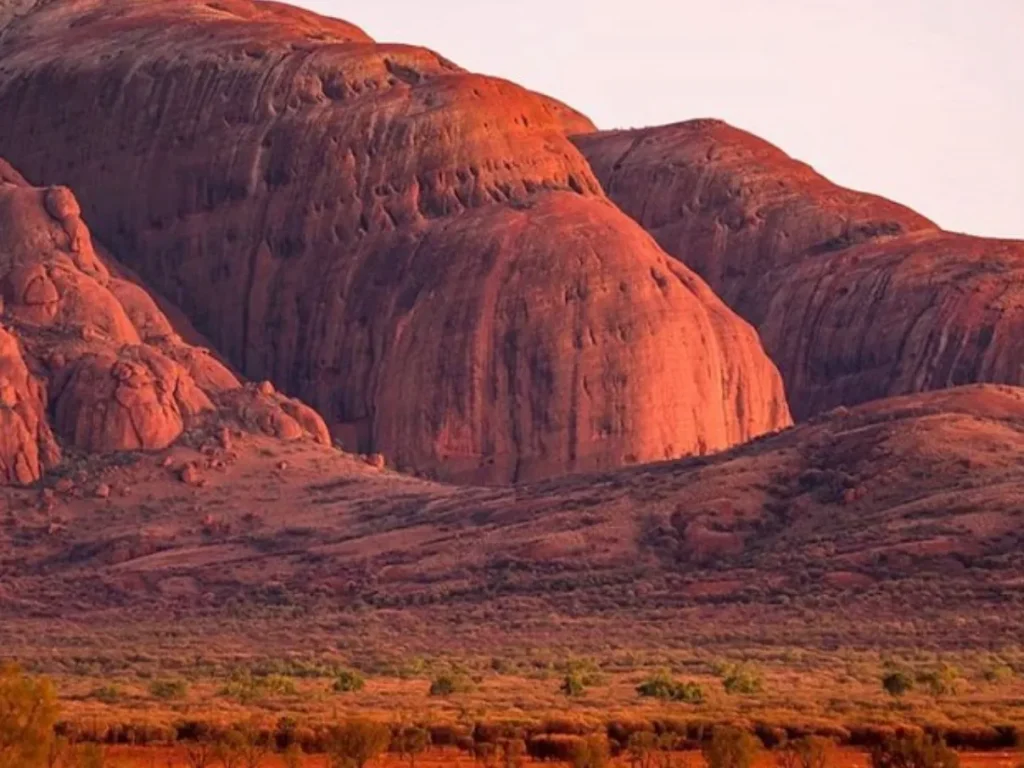
- Kata Tjuta (The Olgas): just short drive from Uluru, these large ancient rock formations offer spectacular walks like Valley of Winds which offers challenging hike and breathtaking views.
- Kings Canyon: The place lies in the Watarrka National Park, and taking a detour to it will pay off handsomely through cliff-top walks that are breathtaking and the Green of Eden, which is a permanent waterhole encircled by rare flora.
Staying and Dining Near Uluru
The accommodation options close to Uluru range from posh hotels at Ayers Rock Resort to cheap campsites with basic amenities. The resort also has different places where one can eat including snack bars and restaurants that serve native Australian meals made excellently.
For those camping, supplies are essential as there are few options available. Many travellers love cooking together at the camp kitchen or grilling at public BBQs. Evening meals are often communal occasions for sharing travel stories under twinkling skies.
Cultural Significance and Respect
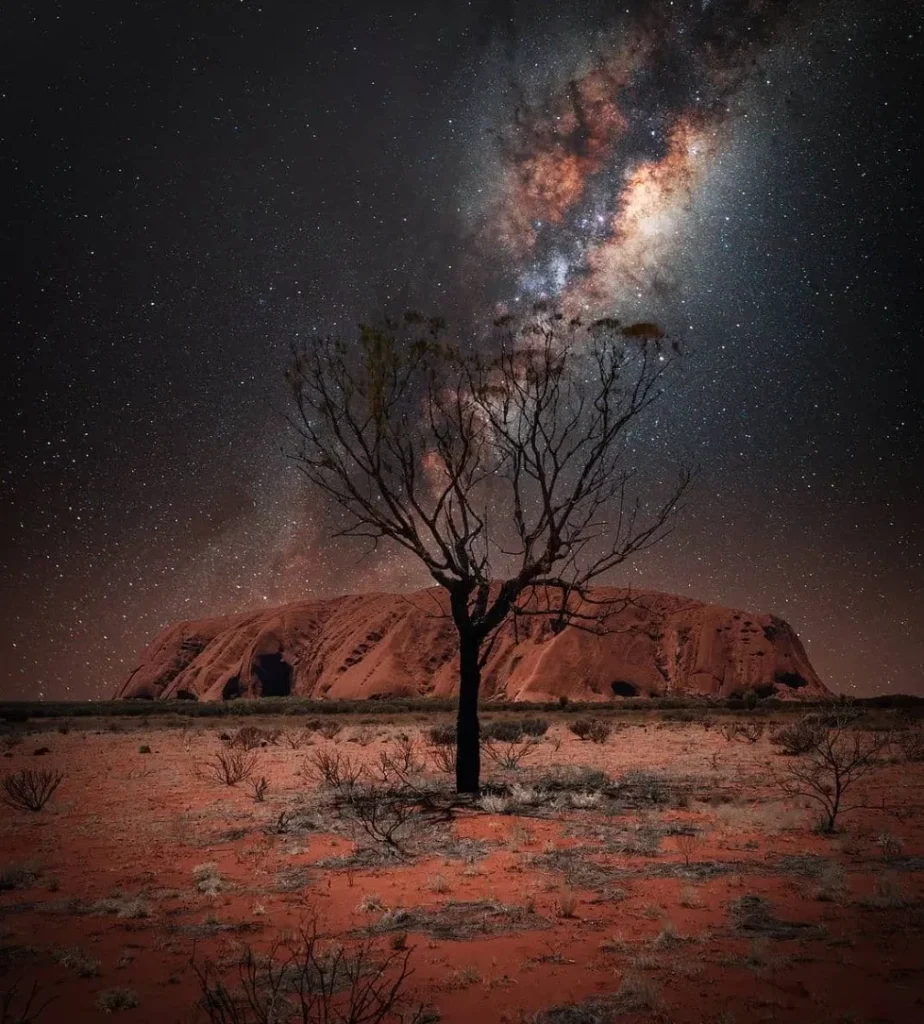
Uluru is located on land belonging to the Anangu people, who have been living there for thousands of years. Therefore, when going there, visitors should have respect for their customs and laws. They need to follow climbing bans on Uluru as well as not take photos in restricted areas. Finally, one can select from guided Uluru tours that enhance knowledge about this ancient landscape, hence making it more than just a trip but rather an enlightening exchange as well as a cultural centre that explains Anangu’s way of life.
Safety and Environmental Awareness
Travellers should be aware of their safety while visiting the Outback due to its remoteness and impact on nature. It is always important to have an adequate water supply, use sun protection measures, and be ready for hot days or cooler nights. By staying on marked paths and using designated campsites only, they help conserve the fragile ecology of the desert areas.
Conclusion
A road trip from Alice Springs to Uluru is more than just a journey through physical space; it’s a voyage through Australia’s living past traditions. Every stopover site tells stories predating our current world order, giving a unique view of the land and its inhabitants. It is about witnessing the special bond between Anangu and their sacred sites, not merely looking at them, so to speak. The experience invites us to see the resilience of this landscape, which is full of indigenous cultures while enjoying its beauty.
FAQ
What is the best time of year to travel from Alice Springs to Uluru?
The recommended period for travelling falls during May- September, when days are more bearable in terms of temperature, while nights remain cool enough for camping and hiking.
How long does it take to drive from Alice Springs to Uluru?
Driving directly will take around 4-5 hours via Lasseter Highway, which covers roughly 450 kilometres. However, factoring in stops at various attractions could consume a whole day or more.
What are the must-see stops along the way?
- Standley Chasm: A beautiful natural alley in West MacDonnell Ranges.
- Ellery Creek Big Hole: A gorgeous waterhole where you can swim.
- Kings Canyon: Stunning sandstone walls with panoramic desert views.
What should I pack for a trip to the Australian Outback?
Essential items include sunscreen protection, water supply, clothing suitable for both hot days and cold nights, first aid kit and emergency communication devices especially if one plans to go off main routes.
Is there any special safety advice for the Outback?
Your relatives or friends should be told about your travel plans and when to expect you back, do not forget to have enough water and food while on the road, and also ensure your car is in good condition. Always remember that mobile phone coverage may be limited, and roads might change abruptly.